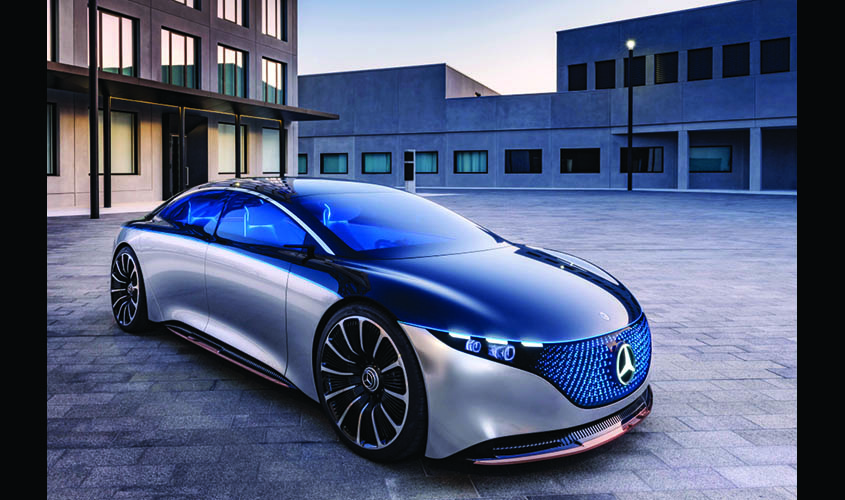There’s little doubt that some of the best engineered cars globally are made by European car makers. Giants like Mercedes-Benz, BMW, Land Rover and the Volkswagen group keep reinventing themselves to give us cars that are always a notch above the rest. And what better place for these automakers to showcase their latest creations than the Frankfurt Motor show. The biennial auto show, one of the largest in the world when it comes to footfalls wound up earlier this week but not before flooring enthusiasts with many impressive set of wheels.
Land Rover Defender
The new Land Rover Defender which broke ground at Frankfurt was probably the most anticipated reveal of the show. According to the company, the icon which has proven its worth in the harshest environments on Earth has been reimagined for the 21st century. Design has been a big talking point on the new Defender. A distinctive silhouette makes it instantly recognisable, with minimal front and rear overhangs providing good approach and departure angles. The side-hinged tailgate and externally-mounted spare wheel make the original identifiable. Inside the SUV gets a dash-mounted gear shifter to accommodate an optional central front “jump” seat. The Defender 110 offers five, six or 5+2 seating configurations while the smaller Defender 90 will be able to accommodate six occupants. Land Rover’s new purpose-engineered D7x (for extreme) architecture is based on a lightweight aluminium monocoque construction to create the stiffest body structure Land Rover has ever produced. The new Defender has been through more than 62 000 tests for engineering sign-off. The car will come in petrol, diesel and Plug-in Hybrid Electric Vehicle options.
Mercedes Benz-EQS
The family of Mercedes-Benz plug-in hybrid cars is growing. With the Vision EQS, Mercedes-Benz is making a clear statement for the continued future of high-quality vehicles and self-determined driving. The exterior design certainly gives the show car a majestic appearance one that is luxurious as well as aerodynamic. Technologically futuristic features include the digital light headlamps, each with two holographic lens modules, integrated into the continuous 360-degree exterior lightbelt. The digital front grille has a light matrix consisting of 188 individual LEDs as a world first. The interior takes its inspiration from the world of luxury yachts. A large sculpture means digital content can be experienced by immersion over the entire surface. The car has electric motors at the front and rear axles and the battery integrated into the vehicle floor providing good balance. More than 350 kW of output and immediately available torque of 760 Nm ensures the Vision EQS accelerates from 0-100 km/h in under 4.5 seconds. Add to that a maximum range of up to 700 km with 80% battery charge happening in less than 20 minutes.

Volkswagen ID.3
It was raining electric vehicles at Frankfurt this time clearly pointing to the rapidly changing world of automobiles. The new fully electric ID. family model, like all other ID. models is based on the new modular electric drive matrix (MEB), which has been specifically designed for electric drive use, ensuring the largest possible vehicle interior. Volkswagen says the ID.3 follows iconic cars like the Beetle and the Golf to introduce the third major chapter of strategic importance for the history of the Volkswagen brand. A rear-wheel drive and 204 PS engine provides good performance. The car has three different battery sizes available and a range of 330 to 550 kilometres is possible depending on the battery selection. Approximately 290 kilometres can be recharged in just 30 minutes (at 100 kW charging capacity). Volkswagen is also guaranteeing the capacity of the ID. batteries for eight years or 1,60,000 kilometres. Production is due to start at the end of 2019 and the first vehicles are due to arrive by mid-2020.

Porsche Taycan
The first all-electric sports car from Porshe —that’s the Taycan. The Taycan Turbo S and Taycan Turbo are among the most powerful production models that the sports car manufacturer currently has in its product range. The flagship Turbo S can generate up to 761 PS over-boost power in combination with Launch Control, and the Taycan Turbo up to 680 PS. The former accelerates from 0 to 100 km/h in 2.8 seconds, while the latter completes this sprint in 3.2 seconds. While the Turbo S has a range of up to 412 kilometres, and the Turbo a range of up to 450 kilometres. The top speed of both all-wheel-drive models is 260 km/h. A system voltage of 800 volts in just over five minutes, the battery can be recharged using direct current for a range of up to 100 kilometres. The design is puristic with the silhouette is shaped by the sporty roofline sloping downward to the rear. The highly sculpted side sections are also characteristic.

BMW Concept 4
The famed BMW kidney grille was once again the hot topic of discussion at Frankfurt. The Concept 4 Coupe features a vertically oriented grille which gives the car a distinctive structure. According to BMW an athletic body, slung low with sporting intent, a dynamic silhouette help this concept car in radiating the DNA of BMW coupes. The form and design of the kidney grille reference legendary brand classics such as the BMW 328 and BMW 3.0 CSi. The side view is defined by its stretched bonnet, long wheelbase, flowing roofline and short overhangs. A slim glasshouse, 21-inch light-alloy wheels along with generously sized and clear surfaces interspersed by just a small number of lines are some of the distinct design elements this concept car can boast of.

Shams Naqvi is an anchor/producer for the News X motor show Living Cars

